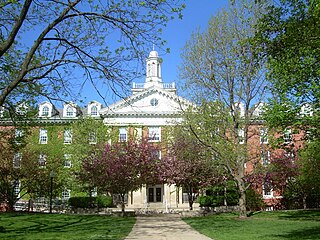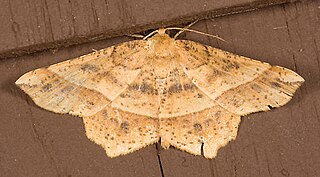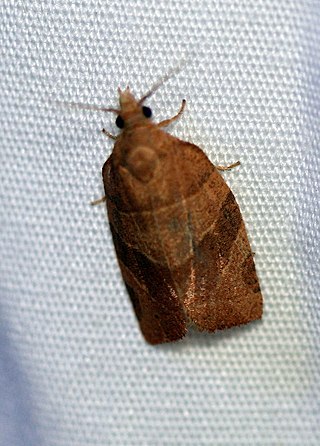
Quercus velutina, the black oak, is a species of oak in the red oak group, native and widespread in eastern and central North America. It is sometimes called the eastern black oak.

The Donald E. Davis Arboretum, in Auburn, Alabama, United States, is a public native plants museum, and botanical arboretum with educational facilities, event spaces, and a conservation program. Its grounds, covering 13.5 acres of Auburn University's campus, include cataloged living collections of associated tree and plant communities representative of Alabama's ecosystems, among which is mixed oak forest, carnivorous bog, and longleaf pine savanna. The living collections include more than 1,000 plant types, including 500 different plant species, with over 3,000 cataloged specimens. The Arboretum contains over a mile (2 km) of interwoven walking trails that meander through various southeastern biotopes.

The Fell Arboretum is an arboretum located across the campus of Illinois State University in Normal, Illinois.

Nichols Arboretum, locally known as the Arb, is an arboretum operated by the Matthaei Botanical Gardens and Nichols Arboretum (MBGNA) at the University of Michigan. Located on the eastern edge of its Central Campus at 1610 Washington Heights in Ann Arbor, Michigan, the Arboretum is a mosaic of University and City properties operated as one unit. The arboretum is open daily from sunrise to sunset with no charge for admission. The Huron River separates a northern section of the arboretum's floodplain woods; the railroad marks the northern border.

The Appalachian mixed mesophytic forests is an ecoregion of the temperate broadleaf and mixed forests biome, as defined by the World Wildlife Fund. It consists of mesophytic plants west of the Appalachian Mountains in the Southeastern United States.

The Appalachian–Blue Ridge forests are an ecoregion in the Temperate broadleaf and mixed forests Biome, in the Eastern United States. The ecoregion is located in the central and southern Appalachian Mountains, including the Ridge-and-Valley Appalachians and the Blue Ridge Mountains. It covers an area of about 61,500 square miles (159,000 km2) in: northeast Alabama and Georgia, northwest South Carolina, eastern Tennessee, western North Carolina, Virginia, Maryland, and central West Virginia and Pennsylvania; and small extensions into Kentucky, New Jersey, and New York.

Apocheima is a genus of moths in the family Geometridae erected by Jacob Hübner in 1825, also known as Phigalia.

Euchlaena tigrinaria, the mottled euchlaena, is a moth of the family Geometridae. The species was first described by Achille Guenée in 1857. It is found from New Brunswick to Virginia, west to Texas, Utah and Oregon, north to British Columbia.

Eulogia is a monotypic snout moth genus described by Carl Heinrich in 1956. Its only species is Eulogia ochrifrontella, the broad-banded eulogia moth, described by Philipp Christoph Zeller in 1875. It is found in most of North America, including British Columbia, Florida, Illinois, Maine, Manitoba, Massachusetts, Minnesota, New Jersey, Oklahoma, Ontario, Pennsylvania, Tennessee, Virginia and Washington.

Apocheima hispidaria, the small brindled beauty, is a moth of the family Geometridae. The species was first described by Michael Denis and Ignaz Schiffermüller in 1775. It is found from Spain through central Europe to Russia. In the north, the range extends to southern Sweden. In the south, it is found on all of the Balkan Peninsula up to the Black Sea.

Pandemis limitata, the three-lined leafroller, is a species of moth of the family Tortricidae. It is found in North America, where it has been recorded from Nova Scotia to British Columbia and from the east coast west to the Rocky Mountains and Arizona. It has also been recorded from Durango in Mexico.

Pandemis lamprosana, the woodgrain leafroller moth, is a species of moth of the family Tortricidae. It is found in North America, where it has been recorded from the north-eastern United States, Quebec and Ontario.












